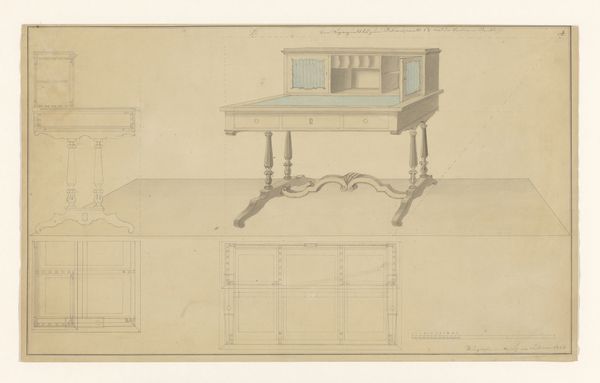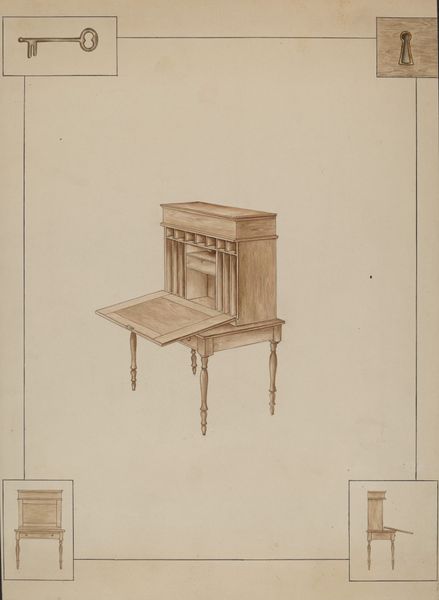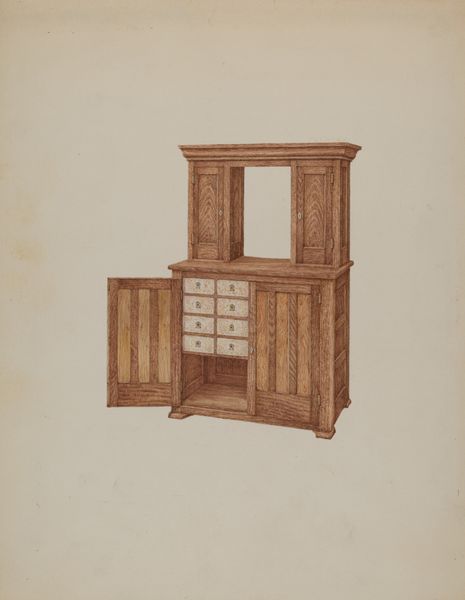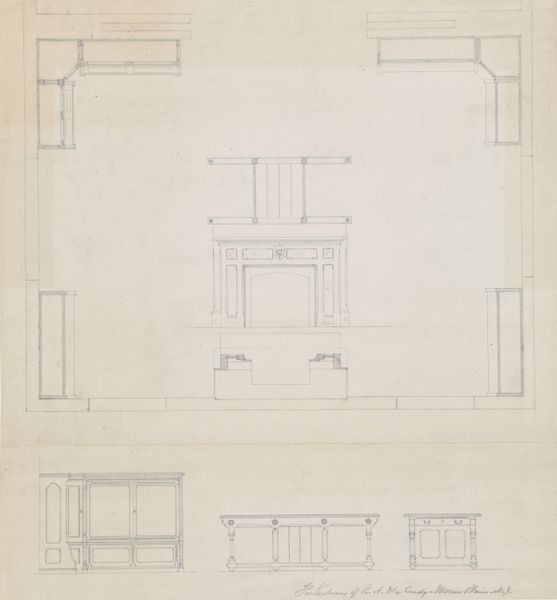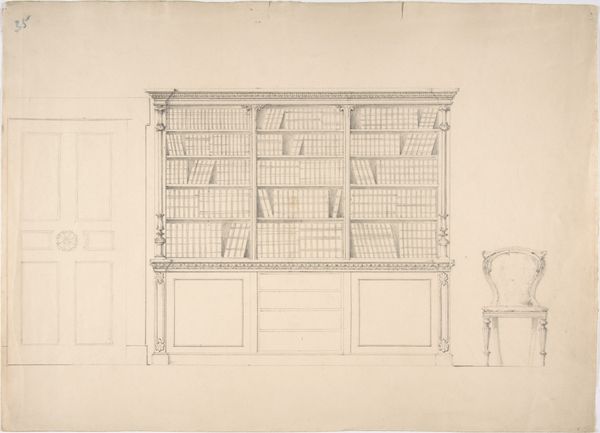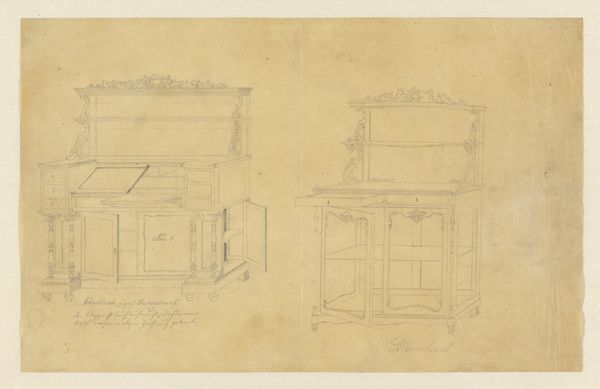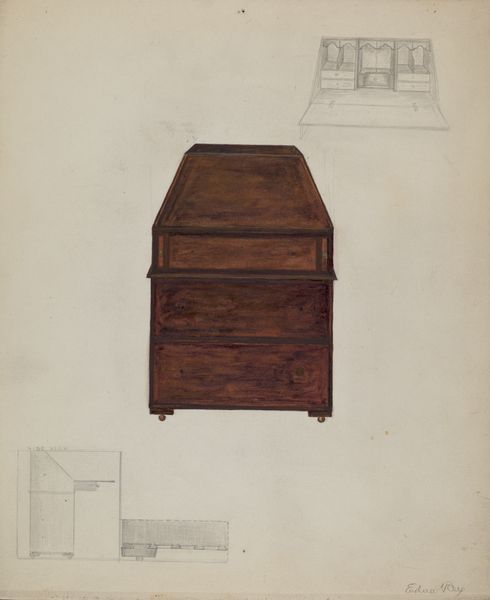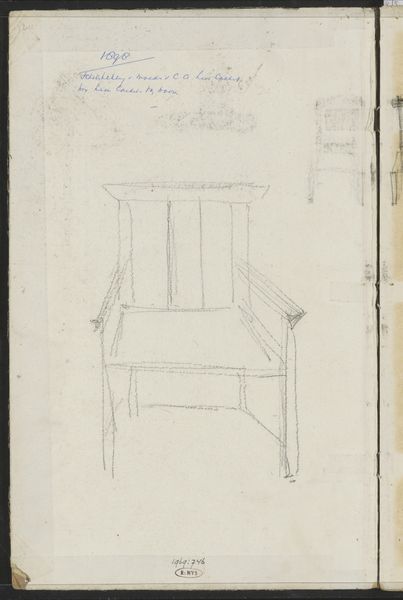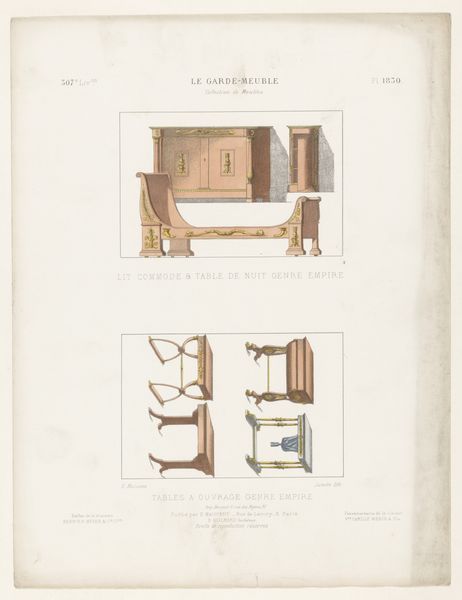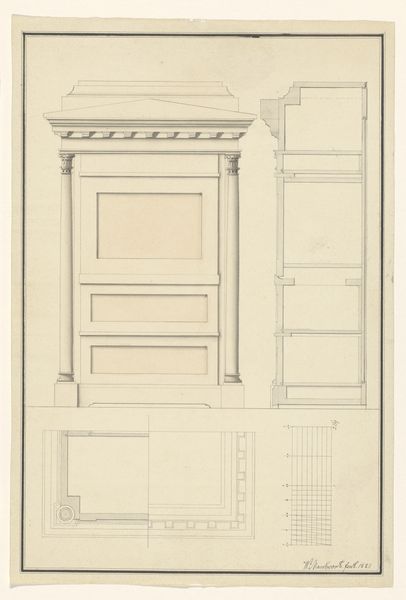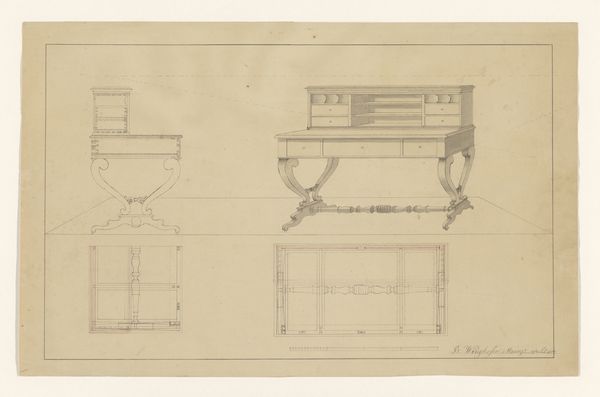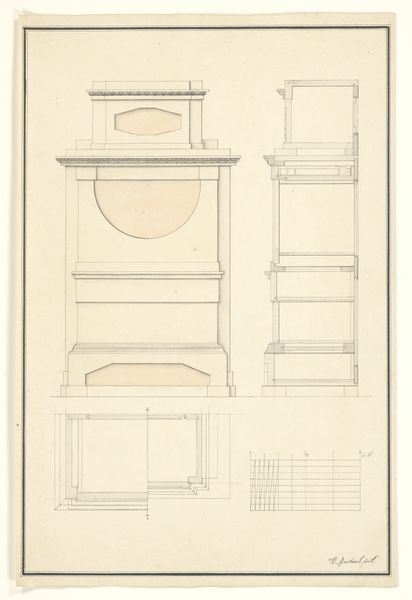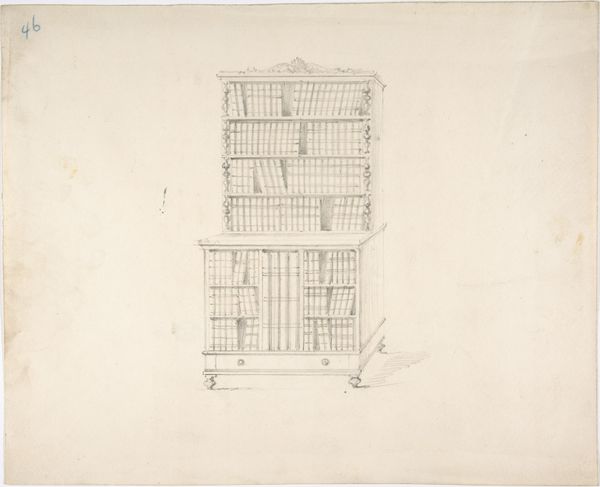
#
aged paper
#
toned paper
#
homemade paper
#
parchment
#
light earthy tone
#
tea stained
#
nude colour palette
#
warm-toned
#
neutral brown palette
#
warm toned green
Dimensions: height 477 mm, width 371 mm
Copyright: Rijks Museum: Open Domain
Editor: Here we have "Ontwerp voor een secretaire met plattegrond en zijaanzicht," a design for a secretary desk by B. Winghofer, created in 1849. It’s rendered in muted tones, almost sepia-like, and seems to showcase multiple views of the same piece of furniture. What particularly strikes you about this work? Curator: What I notice immediately is the clear intention of showing the production and functionality of this secretaire. Look at the details—the different views, the internal structure laid bare. This isn’t just about aesthetics, it's about the labour and the process of building, crafting, consuming furniture. It is about how furniture design integrates form and function, catering to the evolving needs and tastes of its intended social class. Do you consider how this drawing served a practical purpose, perhaps circulating among craftsmen and clients? Editor: That's a great point. I hadn't thought about its immediate practical function. The drawing as a tool… What about the materials? Does the choice of paper or the style of drawing offer insight? Curator: Absolutely. The aging of the paper and the draughtsmanship become historical data in themselves. They communicate a period where utility merged seamlessly with a certain aesthetic expectation, a commitment of craftsmanship. Each choice—from paper type to rendering technique—speaks volumes about 19th-century workshops and the resources available at the time. Editor: So it’s not just about the design of the desk itself, but about all the materials and techniques that went into imagining and making it? Curator: Precisely! This artwork shows both tangible materials like wood and paper and the conceptual materials: planning, skills, cultural value that shapes a design. Editor: I never would have considered the drawing as part of the 'making' process. It provides a much broader perspective. Curator: That's materiality for you – it goes beyond just looking *at* the art to thinking *with* it about how things are made and consumed in the world.
Comments
No comments
Be the first to comment and join the conversation on the ultimate creative platform.
